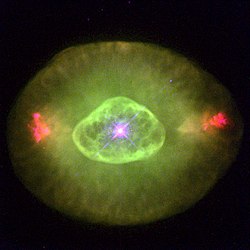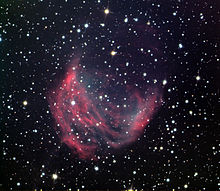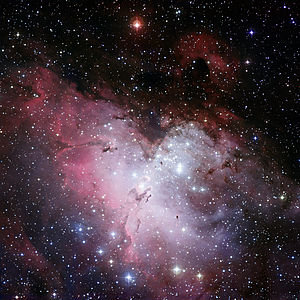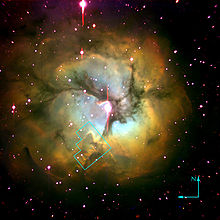Nebulosa Planetaria de Cygnus

NGC 6826 (also known as Caldwell 15) is a planetary nebula located in the constellation Cygnus. It is commonly known as the “flickering planetarium”, although many other nebulae exhibit this “flickering”.
When viewed through a small telescope, the brightness of the central star overwhelms the eye when viewed directly, obscuring the surrounding nebula. However, it can be seen well with vision averted, causing it to “blink” in and out of sight as the observer’s eye wanders.
Abell 50

From Madrid , NGC 6742 is visible all night. It will be visible around 10:50 PM (CEST), 68 ° above its northeast horizon, as twilight turns to darkness. It will then reach its highest point in the sky at 00:48, 81 ° above its northern horizon. It will be lost in the twilight of dawn around 05:54, 37 ° above its northwestern horizon.
It was discovered by William Herschel on February 15, 1786 and it was the first planetary nebula whose spectrum was investigated, this work being carried out by the astronomer William Huggins in 1864.
Nebulosa del Águila

The Eagle Nebula is part of the astronomical object cataloged as M16, that is, object 16 in Messier’s catalog. M16 is made up of the nebula and an open star cluster associated with it, cataloged as NGC 6611, and whose stars are seen in the different images of M16. It is found in the constellation Serpens (the serpent).
In one part of the nebula are the “pillars of creation”, which form one of the most popular images obtained by the Hubble space telescope. The bright emission nebula (HII region) that encompasses the entire area is cataloged as IC 4703. The entire complex is 7000 light years away.
Nebulosa trífida

The Trifid Nebula (listed as Messier 20 or M20 and as NGC 6514) is an H II region in northwestern Sagittarius in a star-forming region in the Scutum-Centaurus Arm of the Milky Way. Its name means ‘three lobes’.
The object is an unusual combination of an open star cluster, an emission nebula (a relatively dense red-yellow portion), a reflection nebula (the main NNE blue portion), and a dark nebula (the apparent ‘gaps’ in the first that cause the trifurcated appearance they are also called Barnard 85). Seen through a small telescope, the Trifid Nebula is a bright and quirky object and is therefore a perennial favorite of amateur astronomers.
In one part of the nebula are the “pillars of creation”, which form one of the most popular images obtained by the Hubble space telescope. The bright emission nebula (HII region) that encompasses the entire area is cataloged as IC 4703. The entire complex is 7000 light years away.


